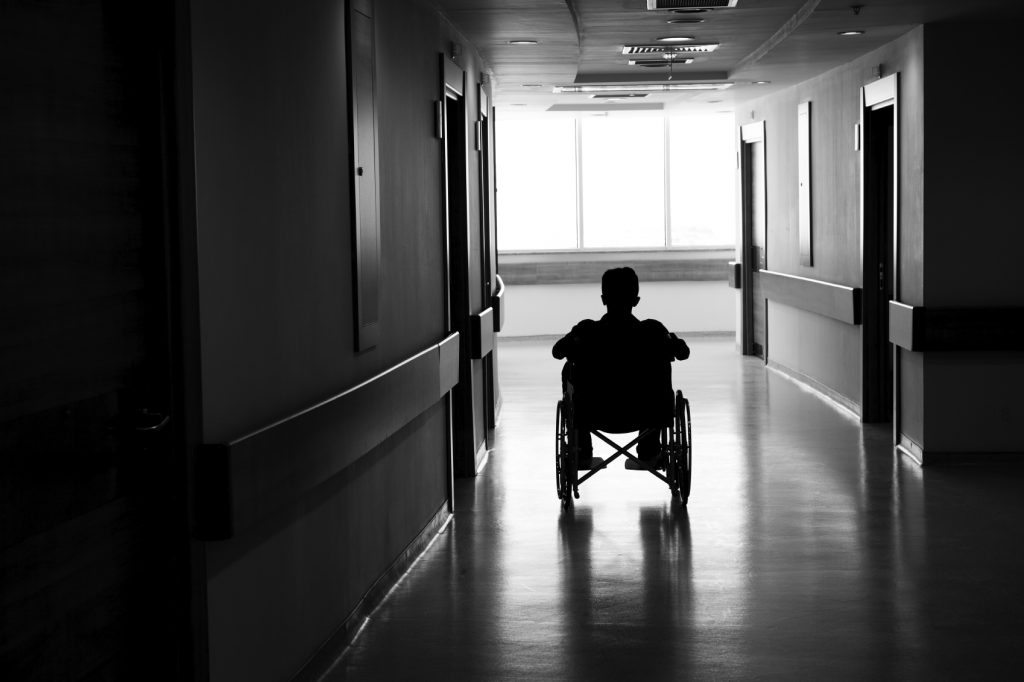
It’s always great when the mainstream media writes about what the healthcare design community has been talking about for years.
Last week, both the Wall St. Journal and the New York Times featured pieces on hospital design. Columnist Laura Landro of the Journal wrote about the healing powers of public art, while the Times’ architecture critic Michael Kimmelman tackled the subject of whether good design can help heal the sick.
Kimmelman’s thoughtful review of the new University Medical Center of Princeton, which opened two years ago, points out many of the evidence-based design decisions that were made to improve outcomes — including single same-handed patient rooms, access to natural light, strategic placement of hand washing sinks, and more.
In doing so, Kimmelman also explores the current state of hospital design, lamenting that it has “often been ignored by front-rank architects” and is a “critical frontier for design.” These are both true statements.
Are front-rank architects able to design better hospitals than the most talented healthcare architects and design specialists? Maybe in some cases, but not the ones I’ve seen lately.
It Starts With a Vision
Great buildings usually require a visionary client. How many hospital leaders are truly visionary when it comes to building design? There are so many reasons why hospital buildings turn out the way they do.
Listening to front-rank architect Michael Graves, who’s recently turned his attention to healthcare design, Kimmelman thinks he’s uncovered another reason why design innovation is missing in many healthcare projects. Graves told him it’s because most hospital architects have never been in a wheelchair.
What? That’s like saying you can’t design a ballpark unless you’re a ballplayer. Or design an elementary school if you’re not a child.
The best healthcare designers I know get patient and staff input to inform their designs. Some even have their project team members stay overnight in a hospital.
Okay, it’s not the same as being in a wheelchair, but my guess is that most RFPs don’t require someone on the project team to be in a wheelchair. Maybe they should.
P.S. Please do me a favor — if you liked this post and like this blog, please share it with others by sending them the link and/or post it on your Twitter, LinkedIn, or Facebook, etc. Also, don’t forget to subscribe, so you’ll get emails when new content is posted. Thanks!
If you like this post, please share.

What’s my story? I’m a healthcare and senior living design knowledge expert who writes and speaks frequently about trends and issues affecting these two industries. I’m also a strategic marketing consultant and content creator, working with companies and organizations who want to improve the quality of healthcare and senior living through the design of the physical environment. You can reach me at [email protected].


12 Responses
Perhaps what Mr. Graves is trying to say is that the Healthcare Design Industry does not place the proper amount of wieght on empathetic design process. If you look at parallels with other Industrial Design and Experience Design practices they embrace a more robust Design Thinking process in which empathetic immersion is very important. I also personally think that our hospital client’s staff and user groups, along with designers who primarily focus on hosptials are desensitized to very important emotional and experiential messages hospital environments send. We need to work harder to engage actual patients and potential patients and use Design Thinking practices honed in other disciplines and markets. I am in a wheelchair as well, the thing it has taught me is that the answers are not found in research, code books and guideplates but finding a way to make the patients perspective indelible on the design process.
Well said, Rod. Empathy is so important to the design process in healthcare. It just annoys me that Graves thinks there aren’t any good hospital architects. Because I know there are.
Hospital design has only been making incremental changes in the past twenty or thirty years because we underestimate the leadership and energy required to truly innovate.
We have visionary administrators, we have empathetic healthcare architects, and we have healthcare design experts ranging from researchers to nurses to engineers who are passionate and knowledgeable about the healthcare environment, its patients and its people.
However, how often do you go through a design process where schedule and first costs did not drive the process and the outcome?
True innovation requires thoughtful inquiry and exploration. Perhaps, the industry requires a new look at its process along with the fortitude to investigate and integrate the multiple perspectives and experiences necessary to design solutions that are creative yet practical.
Kimmelman’s article opened dialogue to comment on several topics. I hope the dialogue expands. Thanks for beginning the conversation, Sara.
Thanks, Jeannie! Getting beyond schedule and first costs is truly a hurdle.
The attention to the patient experience has increased as patients are asked to provide feedback about their care, and under the ACA, hospital ratings affect hospital revenue.
Evaluating the patient experience is at the forefront, and designing to provide effective patient care is not enough. The new guidelines encourage hospital administrators and designers to understand the patient’s emotional response to their healthcare environment and experience.
HCAHPS has certainly made this a hot-button issue, Barbara! And we’ve come a long way in making the connection between the design of the physical environment to the patient experience and outcomes. It’s about time the mainstream media noticed.
Sara,
I admire your work, and do feel that the evidence based design has come a long way in healthcare in the last few decades.
The healthcare designers I speak to are truly attempting to do exactly what is described in the blog. They place themselves in the position of the patient, the staff, and the visitor to attempt to create a healthy and healing environment. The subject is broad and with many facets, so those in the media cannot do it justice, given their article size and time constraints to understand the complexities.
Thanks for your dedication to this worthy subject.
Thanks, Merrilou, for your comments. You’re so right about the media’s constraints. At least they are trying.
Sara Marberry:
Thank you for the thoughtful article on importance of the experience of patients, design thinking, immersion and experience design. I have dedicated my career to improve healthcare outcomes through facility/environment design, experience design, and operational improvements. The challenge is daunting and inspiring, the need for real innovation is greater than ever. As a healthcare architect, I enjoy the challenge.
Low HCAHPS scores reduce reimbursement, as do readmits within 30 days for any reason. A lot of penalties have hospitals scrambling to improve patient satisfaction, and reduce re-admits to keep the revenue they had, taking a lot of time and limited resources that could be spent on great leaps in savings.
It would be great to see CMS, the federal government and insurers add to the penalties an incentive program for innovative changes. Penalties with “Healthcare Reform Act” exist now to discourage overuse of ED’s and impatient facilities when not necessary and just cut revenue and encourage population health, but provide no real plan how to do it, only the providers, architects, CMS and insurance companies can make real improvements that are the intent of healthcare reform.
An example, There is a new treatment model that South Metro Fire is doing in Denver. It is an “urgent care” station wagon that responds to ambulance calls instead of Ambulance + Fire Truck and ER visit.
For example the need for a few stitches has a cost of $500 for care in a living room instead of $5000 in ambulance and ED. Stitches cannot be done in an ambulance as they do not have suture kits. South Metro has access to statewide Electronic Medical Records, so they know when a person is more likely to need an ambulance. With at least one nurse practitioner on board they can prescribe basic medicines.
This mid-level treatment program is focused on quality instead of volume. They are working with insurance payers that are not paying for it at this time, and feel Healthcare reform penalties may help CMS and insurance companies want to innovate and save money, and they hope to make money soon, instead of losing money.
CMS and insurance companies need innovative leadership and to provide incentives for innovation instead of broad penalties and reimbursement reductions, only to move everyone incrementally and make it difficult for hospital to cover costs. This could encourage innovation trails and sharing of successful ideas nationwide, improving healthcare and lowing cost. Design matters, as does reimbursement policy and revenue side, as it can stifle major innovation, cost savings, and patient outcomes.
Thanks, Patrick, for your comments. Love the idea of an Urgent Care Station Wagon.
What I am enjoying is that the mainstream press is starting to write about the relationship of design to outcomes. This feels new to me, as much of what has gotten into the mainstream in the past has been superficial and often about the author’s subjective preferences or aesthetic differences. I like to see them beginning to more often report on pain medications, infections, falls, and length of stay when they feature a project. There is a growing recognition in the press of the role that can be played by the role of research findings as a helpful contribution to design decision-making. It is a good trend.
Thanks, Kirk, for your comments. And it is good to see more reporters linking outcomes to design. Perhaps one of the reasons is that the healthcare folks they are talking to are starting to understand it, too!